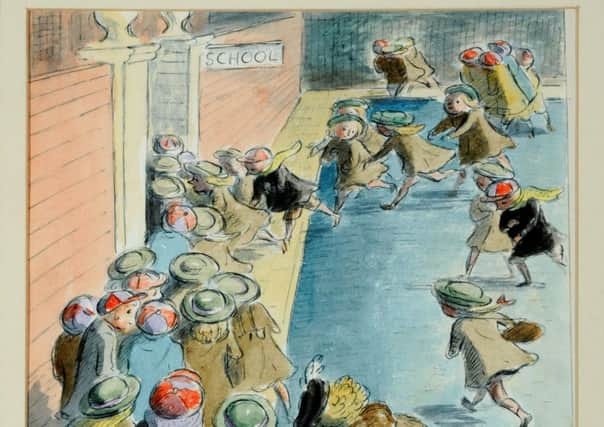Artwork illustrates post-war period


The art of illustration is a very special skill – distilling an idea or an author’s words into a single image requires a particular kind of imagination – and a new exhibition at the Stanley and Audrey Burton Gallery at the University of Leeds celebrates that skill.
Nostalgia and Progress: Illustration after the Second World War, which opened last week, showcases the work of major post-war British illustrators, such as Edward Bawden and Edward Ardizzone, as well as featuring pieces by contemporary illustrators inspired by the era.
Advertisement
Hide AdAdvertisement
Hide Ad“This is the third illustration show in a series we have done over the past few years,” explains curator Layla Bloom. “In 2010 we did one about illustration from the 1890s and we were amazed at how popular it was, then two years ago we did another looking at the period between the wars.”
The period after the Second World War was a very fertile one for illustration in terms of technological advancement in the printing process – despite the strictures of rationing – while stylistically it expressed a desire to romanticise the time before the war.
Edward Bawden certainly looked to the past for inspiration – his work combined wistful nostalgia with a forward-looking approach and consequently became very popular as a result, influencing generations of illustrators.
In the exhibition there are some of his well known images including the linocut An Old Crab and a Young as well as a menu card he designed for the Queen’s Hotel in Leeds in 1954 and some of his sketchbooks.
Advertisement
Hide AdAdvertisement
Hide Ad“Edward Ardizzone drew scenes of humdrum everyday life, there is a real humanity in his work,” says Bloom. “After the war you see that in general – the artists look to people’s humanity.” His pen, ink and watercolour Windy Day is a wonderful example of this depicting a street scene of a blustery day, with a lovely touch of humour in it as a mother finishes knitting her daughter’s scarf, which is around the little girl’s neck, as she takes her to school. There is a light-hearted feel to Ardizzone’s illustrations, but others of his contemporaries, such as Charles Keeping and Ronald Searle, who are both also featured in the exhibition, approached their art in a different way.
“Their experience of the war definitely changed these artists,” says Bloom. “Some of them wanted to forget about the war and that shows in their work, for others there is an undercurrent of unease and anger. Keeping had an uncomfortable experience and you can see that in his work – it is very dark, angry and expressionistic. Searle is similar in that you can see an angrier style in his work after the war.”
The work of the several contemporary illustrators in the show reveals the influence of the post-war era. York-based artists Mark Hearld and Emily Sutton’s illustrations have an appealing home-made quality that definitely harks back to the time of “make do and mend” and has a great deal of resonance in our current era of austerity. “I think for them it’s a reaction to those too clean and too smooth-looking digital designs,” says Bloom. “They are interested in the textures you get when you make things by hand.” Much of the work of the other contemporary artists reflects this approach, using traditional processes, and the revived interest in handicrafts.
“Despite the changes in the publishing industry and the availability of e-books, people are still willing to pay for nice printed books,” says Bloom. “People value books as objects – they like things that are handcrafted and well made.”
• Nostalgia and Progress is at the Stanley and Audrey Burton Gallery until February 28. www.library.leeds.ac.uk/art-gallery